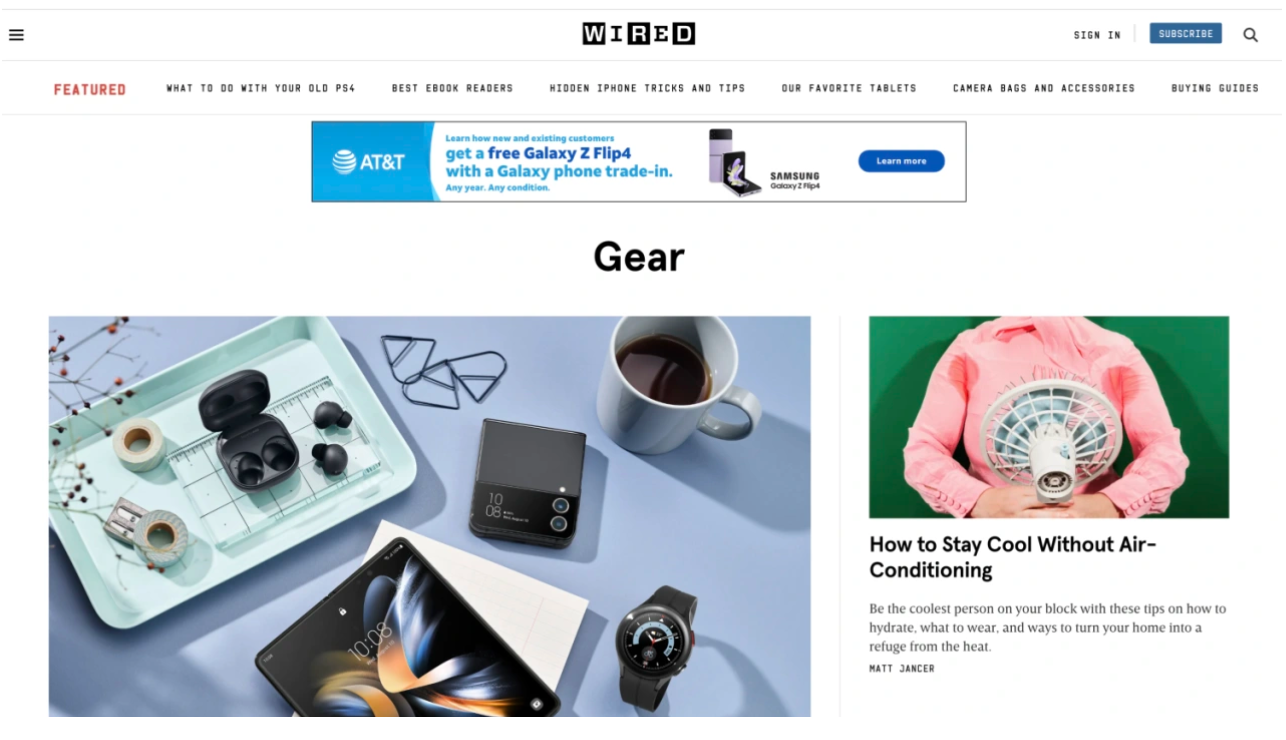If you own a website or work in media, chances are you’ve heard the term “contextual advertising” but you may not understand exactly what it is, how it works, or why it should matter to your business.
Contextual advertising involves placing ads on a web page, related to the actual content of the page. For example, if you are reading an article about the best islands in the world on Travel + Leisure, you may see an ad for a Capital One travel credit card.
If you’re perusing the Style section of the Wall Street Journal, you may see an ad for Bulgari, the Italian luxury brand known for its jewelry, watches, fragrances, accessories, and leather goods.

Similarly, WIRED’s Gear section features an ad for the Samsung Galaxy Z Flip4 phone. These are all examples of ads matching the content you see on the page.

How does contextual advertising work?
To implement contextual targeting, you must first be sure to work with a demand-side platform (DSP) or another technology partner that has these capabilities. From there, the following steps are generally followed:
1. Choose Parameters
Contextual technology cannot work unless the system knows what your campaign is about. You can choose your parameters for your contextual campaign either by topic (ie: music, automobile, pharmaceutical) or keywords (ie: luxury travel, renewable energy, newborn bottles). Typically, you will also get advanced options that allow you to choose sub-topics or sub-categories for added precision.
2. Analysis
The next step is the analysis of each web page on the technology partner’s network to match your ad with the most relevant content. Important variables such as language, text, page structure, link structure, and more all go into this analysis phase. This analysis often involves AI and machine-learning algorithms to accurately mirror human behavior.
3. Placement
After the analysis is complete, your ad is matched with the most relevant content and placed.
How does contextual advertising differ from behavioral advertising?
Unlike behavioral advertising which examines a user’s online behavior such as browsing history to serve relevant ads, contextual advertising takes a much closer look at the content that is actually being consumed. Although the death of third-party cookies has been delayed by Google until the second half of 2024, it’s important for advertisers to future-proof their brands by investing in contextual targeting sooner rather than later because contextual advertising is positioned to replace the cookie altogether.
You’ve probably been targeted behaviorally before and may even have noticed it. For example, perhaps you were browsing the internet for the best smart TVs on the market. Well after you’ve left whatever article you were reading with TV reviews, you might see a display or video ad on a completely different website for the exact TV you were reading about. This type of advertising is solely based on previous browsing behavior whereas contextual ads are based on the specific content of a web page.
What are the benefits of contextual advertising?
There are a plethora of advantages about contextual advertising to the advertisers, publishers, and users. Here are just a few:
A more personalized experience
Since contextual advertising matches the ad to the content a user is consuming, it inherently creates a more personalized UX by serving ads that are extremely relevant. This can help increase brand loyalty for the publisher and build a stronger connection with the user if they feel they are being catered to.
Not subject to privacy regulations
With GDPR and CCPA regulations looming over the advertising industry, browsing behavior data is more difficult to collect than ever before. Consent to leverage third-party cookies is not always given, as visitors today must opt-in to the process. In contrast, contextual advertising does not rely on any personal identifiable information (PII) and therefore, makes it easier and safer for advertisers to remain compliant with all privacy regulations.
Built-in brand safety
The risks associated with brand safety are very real for advertisers and challenging to manage if they are not engaged with technology partners who monitor safety concerns. For example, top tier brands often do not want their businesses associated with political content, alcohol, guns, adult, or extremist content. Brand reputation truly does matter to consumers.
Since contextual advertising involves the web page content itself and is matched with whatever topics, keywords, or subtopics you’ve specified, it makes it much less likely that your campaign will appear in an unsafe or undesirable environment.
More accurate than behavioral advertising
Past browsing behavior is not always the most accurate depiction of what a website visitor wants or needs right now, especially when it comes to purchasing decisions. Just because I was viewing a bedroom quilt 5 days ago does not necessarily mean I’m still in the market for such an item or that I’ve decided to purchase it today. Moreover, because contextual advertising involves AI and machine-learning capabilities, it offers a more effective means of targeting with improved accuracy and higher quality over the behavioral method.
Want to learn more about how EX.CO can help you jumpstart your contextual advertising campaigns, or sell more contextual video ad inventory to brands? Drop your details below.
